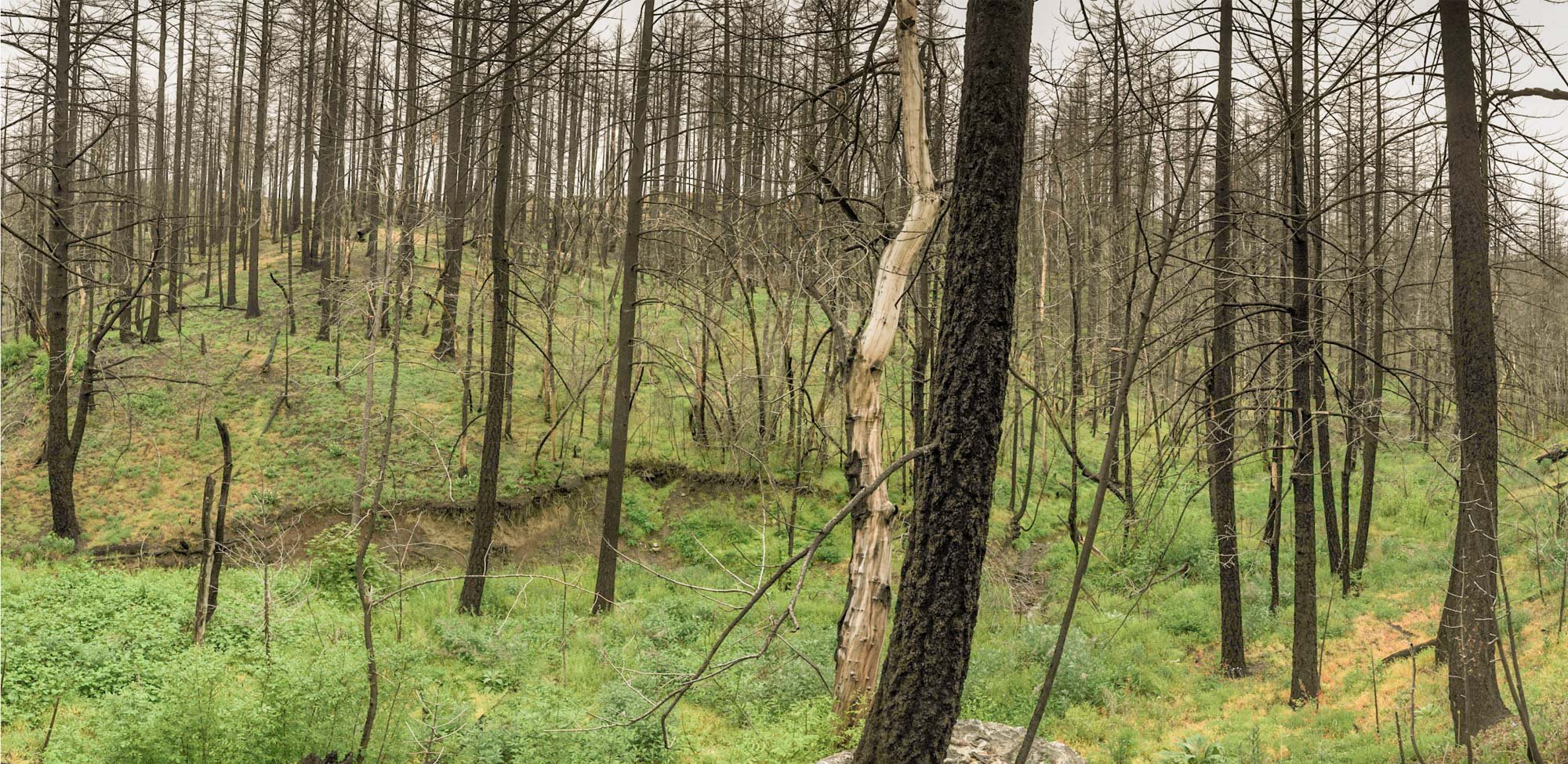
REPEAT PHOTOGRAPHY
Repeat photography serves as a valuable tool in showcasing transformations following events such as fires and diseases. It captures the natural ecological cycle of life, death, and regeneration. This method can also be employed to study the progression of the yearly seasons.
Here are some examples of how repeat photography tells the stories of these processes. My objective is to continue monitoring these forest locations for many years to come.


Annual wildfires are common in Sonoma, Napa, and Lake Counties. Mt. St. Helens sits at their fire-prone intersection. Its eastern slopes feature Oak Woodlands and dense Madrone and Tan Oak forests untouched by Sudden Oak Death.
In 2021, a moderate-intensity fire swept through the area, causing significant forest loss. However, the Oak Woodlands, particularly the resilient Blue Oaks in the photos, survived. The young fir trees fared poorly, leading to a shift toward a more open oak woodland landscape.
The fire decreased the forest density, promoting grasslands beneath the oaks to reduce potential future fire risks.
Taken three years apart, these photos show how Sudden Oak Death-affected forest on the eastern slopes of Mt. St. Helens. Observe the rapid growth of the Douglas Fir tree in the foreground and fallen Tan Oak tree that split the previous decaying trunk. Unfortunately, the Tan Oaks will continue to decline, and in the next years, the forest will shift from a mixed composition to predominantly Douglas Fir, raising the risk of destructive forest fires.


In 2021, a swiftly moving fire wreaked havoc on Redwood Canyon within Sequoia National Park. This canyon is home to one of the most significant gatherings of sequoias across the Sierra Nevada region. The fire's ferocity was unprecedented, leading to the scorching of approximately 30% of the sequoias in the National Park. An inferno of such magnitude has not been witnessed for millennia, if not tens of thousands of years, and serves as a grave warning that the once fire-resistant giants of the Sierras are now in jeopardy.
The images shown above show the conditions near the fire's outer edge. The fate of these trees remains uncertain. The tree in the foreground has been impacted by root burn and is likely to fall during one of the upcoming winter wind events. Typically, fires only climb about 15 feet up the fire-resistant trunks, but now, the charred trunks tower at over 50 feet. Most of the very oldest trees were entirely consumed by the flames. The hope for the regeneration of a Sequoia dominant forest lies in the trees small cones that are scattered on top of the ashes.






